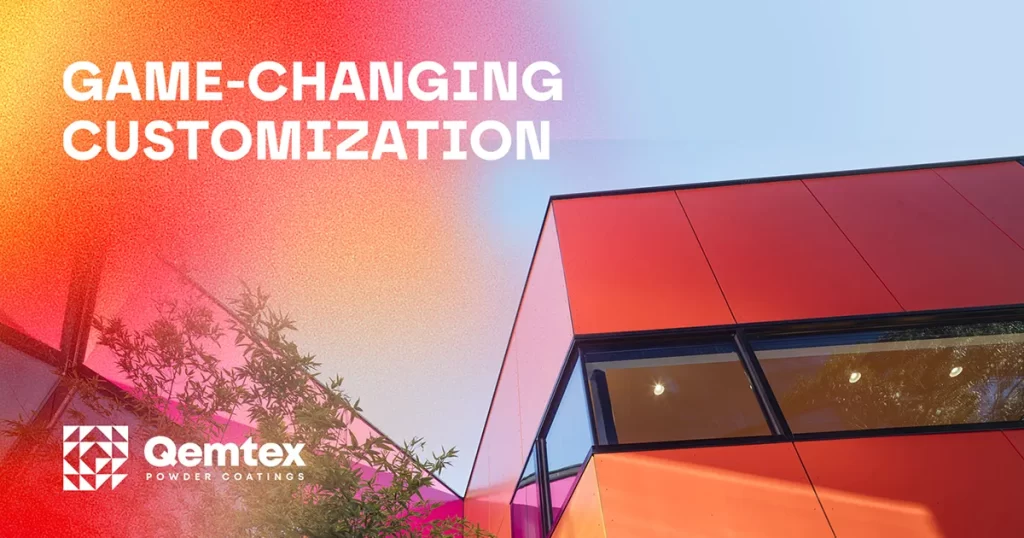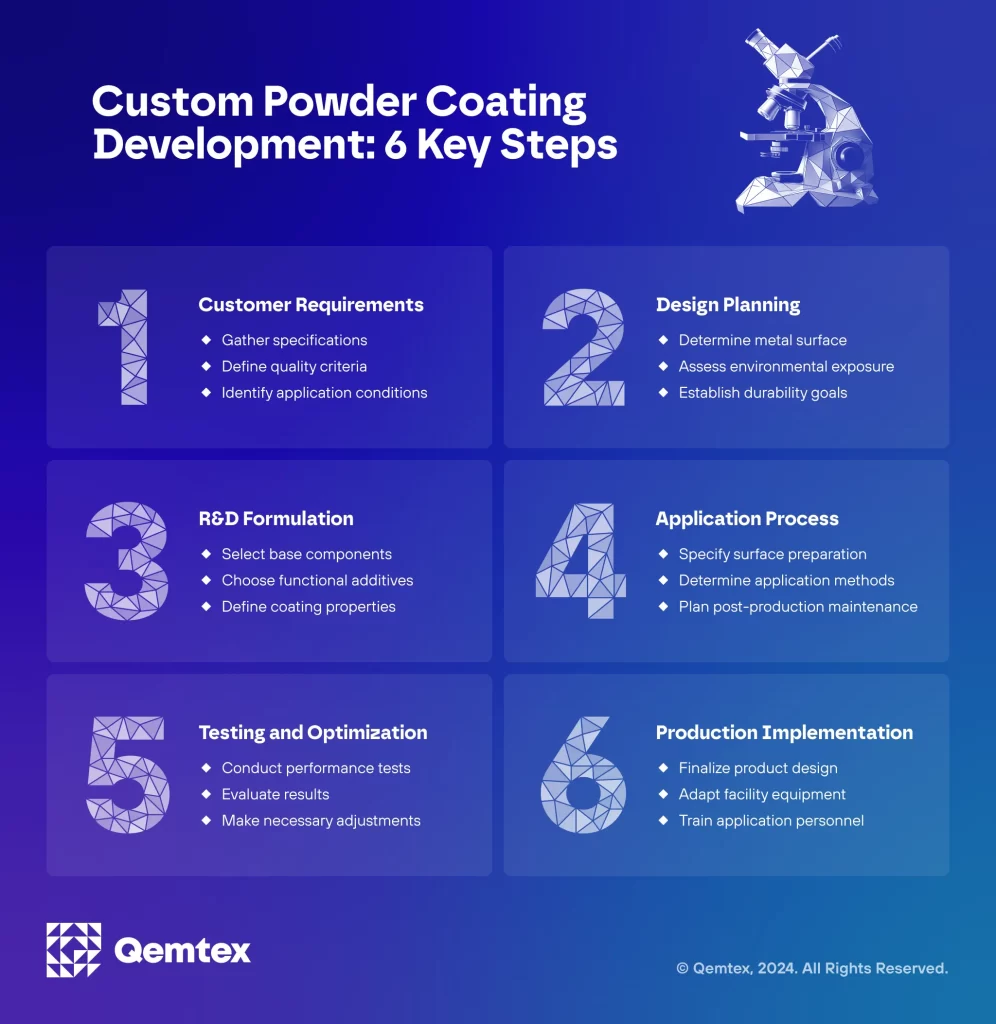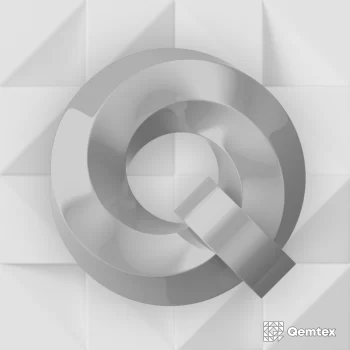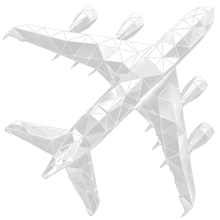Custom Powder Coatings: What Are They, and Why Do Manufacturers Increasingly Choose Them?
In today’s competitive manufacturing landscape, the demand for high-performance, sustainable, and customizable coating solutions has never been greater. Custom powder coatings have emerged as a preferred choice for manufacturers seeking to achieve a unique, durable finish that meets their specific design and performance requirements.
In this article, we’ll explore what custom powder coatings are and how they differ from standard solutions. We’ll delve into these advantages and provide an overview of the process involved in creating them, from initial consultation to the final product.

What Are Custom Powder Coatings?
Powder coating, one of the most durable coating types, represents a significant advancement in the protective and decorative coating industry. These specialized coatings, made from thermoplastic or thermoset polymers, are typically used to create a harder surface than traditional liquid paint.
Applied in a free-flowing, dry powder form, they require heat to create a solid layer, thus eliminating the need for solvents to keep the binder and filler components in liquid suspension. The distinctive application and curing processes set them apart from traditional methods, offering numerous advantages such as high-quality surfaces, enhanced efficiency, and environmental compatibility.
While many standard combinations of color and texture are available, sometimes businesses require a completely custom powder coating. Companies can achieve various effects and properties by ordering changes to the formulation of powder coatings, allowing them to adjust the appearance and performance characteristics to meet specific industrial and consumer needs.
Why Choose Custom Powder Coatings?
Many customers need powder coatings to achieve a high-quality, durable finish that ensures maximum production capacity, improved efficiency, and environmental compliance. The performance of a coating is not only about how it looks on the surface but also about its functionality and how it withstands scratching, abrasions, or color fading over time. The texture is as crucial as its color and, in some cases, can be even more important.
By tailoring the formulation, companies can achieve a unique, signature look to differentiate themselves from their competition. However, customizing formulas goes beyond just aesthetics. Specific pigments or additives can enhance the surface’s corrosion-resistant properties, while texturing agents can create surfaces ranging from fine to coarse textures. Manufacturers may also require specialized features, such as electrostatic discharge (ESD) protection or heat-reflective properties for their products.
Standard vs. Custom Powder Coatings: Key Differences
Moreover, powder coating is primarily applied to metal surfaces. Consequently, it has design applications across a broad spectrum of fields, including industrial components, medical devices, architectural projects, automotive refinishing, bicycle parts, household appliances, furniture, enclosures, trailers, and lighting fixtures. The customization significantly expands the possibilities for manufacturers, allowing them to apply this progressive type of coating more frequently and unlocking new opportunities for differentiation in the market.
Designing Custom Powder Coatings: A Step-by-Step Process
The design process in powder coating begins with the customer determining their specifications or performance requirements. The specification clearly defines all areas to be measured in order to provide a quality product, explains how these areas will be measured, and most importantly, defines how the acceptance or rejection of a coated part will be determined. If written correctly, the specification should eliminate much of the subjectivity in the evaluation process.


To start the design process and manage it correctly, it’s essential to know the answers to some key questions, such as:
- On which metal surface will the requested powder coating design be applied, at what dry film thickness in microns, and which pretreatment will be applied?
- What atmospheric conditions will the coated part be exposed to?
- How much durability is desired for these atmospheric conditions?
- What are the application types and conditions at the customer's facility?
- What is the customer's consumption expectation?
By asking necessary questions like these tailored to specific segments and customer needs, it’s possible to create the right design and provide a solution that perfectly meets the customer’s expectations.
Once the specifications are established, the R&D team formulates the coating and decides on surface preparation, application methods, and post-production maintenance. Changing the formulation of powder coatings allows for attaining a wide range of properties and effects. For example, using specific pigments or additives can enhance the coating’s corrosion-resistant properties, while the addition of texturing agents can create effects ranging from fine textures to coarse, sandy surfaces. Furthermore, incorporating special additives can result in enhanced functionality such as improved first-pass transfer efficiency, ESD protection, or heat reflectivity.
The overall design of the structure to be coated and the type of metal used should facilitate not only surface preparation, coating, and inspection processes but also post-painting maintenance of the part. The goal is to achieve the structure’s durability potential through carefully considered design, an appropriate coating system, and correct application conditions at the facility.

The R&D designer is responsible for selecting the most suitable corrosion protection system and avoiding design errors that could compromise the coating quality and the structure’s durability. Once the product is designed, taking all these criteria into account, the designer performs performance tests, approves the product, and ensures facility adaptation.
Development processes can vary depending on customer specifications, the presence or absence of desired requests in the existing product portfolio, or atmospheric durability requirements. In original equipment manufacturer (OEM) or pipeline developments, a longer time may be required due to process performance tests and approvals. However, in response to customer requests in the existing product portfolio, color and effect matching in segments such as galvanized iron (GI) and architecture can often be completed within a maximum of 4 days.
Unlocking the Potential of Custom Powder Coatings
Customized products offer manufacturers the opportunity to create unique, high-performance goods that meet specific design and functional requirements. By tailoring the formulation and application process to the customer’s needs, we can achieve a durable, attractive finish that enhances product quality, eases operations, and reduces rework, ultimately increasing profitability.
The development of custom powder coatings is a collaborative process between the customer and the coating provider, involving careful consideration of performance requirements, environmental factors, and application conditions.
Need a Custom Solution?
- Receive a powder coating designed specifically for your production within 2-4 business days.
- Shorten the time required to launch a new product or color offering.
How Qemtex Helps
Qemtex is dedicated to helping manufacturers unlock the full potential of this technology. With a focus on sustainability, innovation, and customer satisfaction, Qemtex’s team of experts works closely with clients to develop tailored powder coating formulations that meet their unique requirements.
By combining cutting-edge technology and a deep understanding of the manufacturing process, Qemtex empowers businesses to create products that stand out in the market and deliver exceptional performance.













